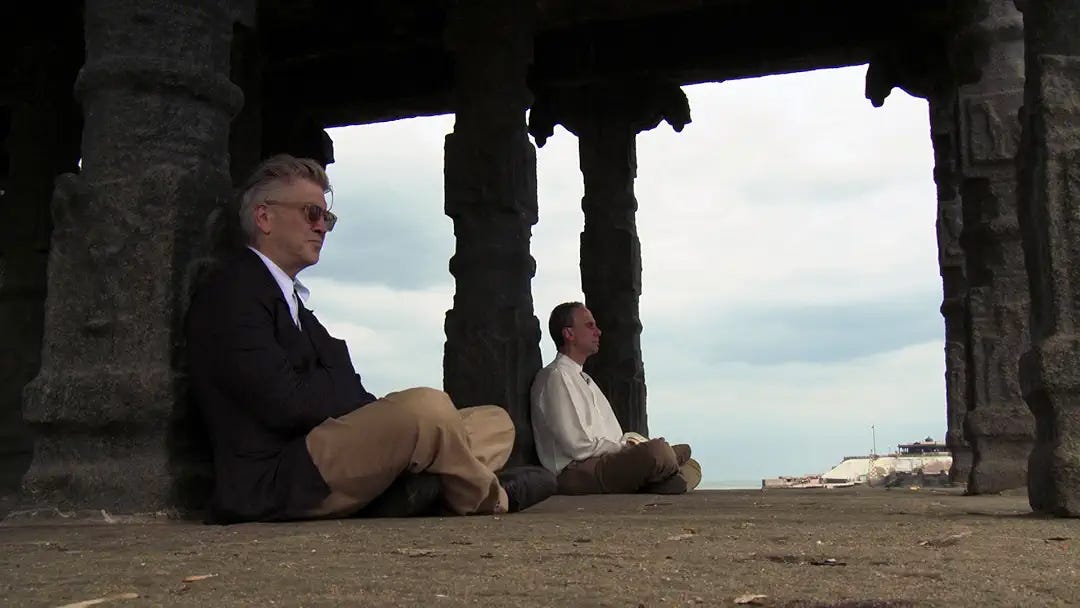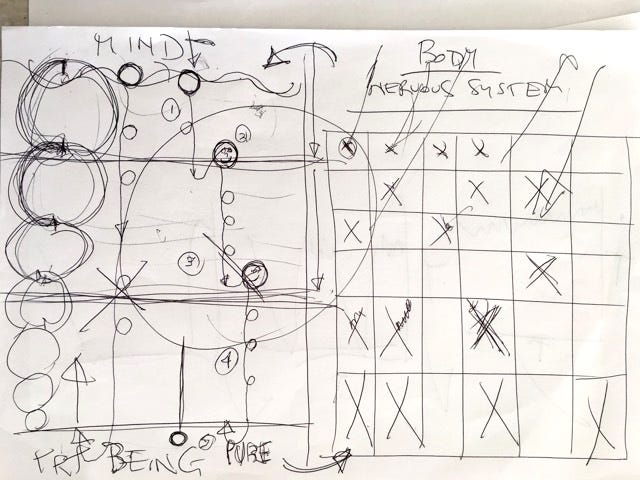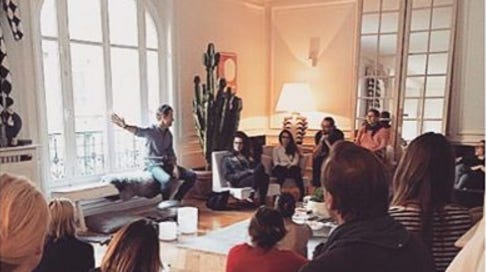9 Years of Twice Daily Meditation
“It’s like going to the bank vault and bringing out bars of gold.” —David Lynch
Today is my meditation anniversary.
Nine years ago, I signed up for a four-day Vedic Meditation course in Paris and the daily practice has had such a transformative effect on me, I can’t imagine life without it. Every year on January 21st, I thank a fortuitous meeting with an Australian meditation teacher for the gift.
As a yoga student and teacher, I had tried many different meditation techniques up to that point, with well-known teachers even, but none of their classes, workshops or books had an impact on my incipient practice. The teachers I studied with were great, don’t get me wrong: Sally Kempton was a magnetic storyteller, but her vibe was too gentle for me. There were other teachers, too, but something in their language or manner turned me off.
This is why I always encourage everyone to try different methods and teachers — whether it’s meditation, yoga, cooking, foreign languages, dancing etc. You have to discover what suits you, and sometimes it’s a lot of trial and error. It’s not because a teacher is famous or that a friend of yours had success that you yourself will learn.
Vedic Meditation
Anyway for me, Vedic Meditation1 landed with a thud — you might even say, a Shaktipat — and those four days cemented a habit that continues to this day. Was it the ritual initiation with its flowers, fruit, incense and chanting? Was it the mantra selected specifically for me? Was it toggling between at-home meditation sessions and sessions with my teacher during those four days that built up a sustainable habit? Was it the monthly group meditations in a beautiful apartment filled with art books and Diptyque candles? Probably ALL of those things plus the fact that it was quiet. There was talking before and after the meditation, never during. During meditation whether alone or in a group, it was just me, my breath and my mantra.
Hot take: STFU should be every meditation teacher’s principle mantra.

David Lynch and the benefits of meditation
I wasn’t planning on talking this week about my meditation practice — meditation is really personal and I don’t want to be one of those people who bores everyone with it — but David Lynch’s passing moved me to reconsider. More than yoga asana, meditation has had a direct influence on how I “catch” ideas (to use a Lynchian metaphor) and how I let them sit still in the sea of me or release them.
Studies have shown that meditation increases focus, lowers blood pressure and helps you manage stress, but what the studies don’t tell you — and David Lynch does — is that meditation broadens your creative capacities by opening the door to unbounded consciousness. And consciousness, for all its woo-woo connotations, is actually another word for a quantum wave in physics. Our brains “and perhaps our very consciousness—are linked to a quantum universe.”
Trippy.
Leave it to the brilliant David Lynch (gift article) who passed away last week and who was a Transcendental Meditation devotee for more than 50 years to better explain meditation’s creative benefits:
“It’s like going to the bank vault and bringing out bars of gold, and then taking them home and stacking them in your closet. And it never goes away! You can even start enjoying very strange things that used to drive you nuts before. And things get more like a game than a torment.”2

What I love about the “bars of gold” image is that it resembles the way I visualize the effects of regular meditation: a passive game of Tetris or a Rubik’s Cube where each little square arranges itself next to its neighbor in an orderly fashion. A sort of defragging of the mind.
ICYDK: Defrag is the process of defragmenting and reorganizing data on a hard drive so that kindred groups of data are arranged in contiguous blocks. Defragging is important because it optimizes your computer’s performance by eliminating the gaps that arise between data blocks in order to speed up access to files.
After a meditation session I often feel as though my thoughts have organized themselves on their own, that the meditation has done some very simple housekeeping. At the end of a typical session, my mind/hard drive no longer resembles a chaotic mosaic of blocks but neat, pleasing stacks of bars (I’m not quite at David Lynch’s gold status… but here’s hoping 😉) And meditation occasionally offers up new ideas or different approaches or even solutions to intractable problems.
And all you have to do is sit on your ass and close your eyes! With or without a mantra, with a teacher’s guidance or on your own, with or without music, using any technique as long as it feels right. It’s up to you.
“I have no idea where this will lead us, but I have a definite feeling it will be a place both wonderful and strange.” (gift article)
Here’s our friend and Paris-based meditation teacher Tanya explaining why Vedic Meditation is called Vedic Meditation.
Howard Fishman, David Lynch’s Relentless Creativity. (The New Yorker, February 21, 2021).






So interesting! Love it!
How long do you meditate? We do 10 minutes each morning, but probably should work my way up to 20.